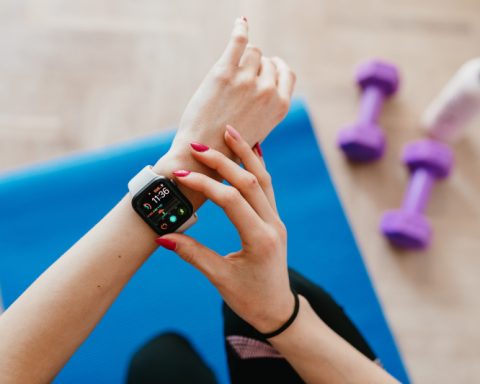The secret to being more productive is not just managing your time but also your energy. Creating an effective workout routine is a super helpful tool for boosting your productivity and overall well-being (e.g., increased energy levels and improved focus).
This article will provide a step-by-step guide to creating an optimized workout routine. It would be tailored to boost your physical fitness and enhance productivity and well-being. Adopting a customized approach will allow you to enhance your techniques and improve your outcomes.
Understanding the basics of effective workout design
Diving head-first into productive exercises is something we should shy away from doing initially. Instead, learn the fundamental principles first — these provide the backbone for any workout regimen to be truly effective.
Principles of workout efficiency
When creating efficient exercise routines, consider three essential principles as the foundation. Including these principles in your workout routine lets you work efficiently and maximize the results of your workouts:
Specificity
Clearly define your desired outcome. Choose exercises synced with your personalized fitness objectives, and don’t just engage in various arbitrary workouts.
For example, if you want to improve muscle power, incorporate squats and deadlifts. Similarly, improving your cardiovascular function also requires proper workout selection. Efficient cardio workouts that make your heart pump, like running or swimming, should fit the bill.
Overload
To continue improving, you must gradually make your exercise routines more challenging.
You can achieve this by slowly increasing the weight, number of sets, number of repetitions, or duration of your workouts. This is called progressive overload. It’s crucial for building muscle and enabling your body to adapt.
Recovery
Resting is just as important as pushing yourself to the fullest.
Your body requires time to rest and heal after a demanding exercise session. Be sure to plan rest days and utilize recovery techniques like stretching and foam roller. These will prevent injuries and keep your body prepared for your next session.
Read more: Efficient Exercising: Make Time and Save Time Doing Them
Personal goals in workout design
Your workout plan should be like a map, guiding you toward your fitness goals. If you take the time to figure out what you want to achieve upfront, your plan will be laser-focused on getting you there.
Here are some ways to shape your goals:
Weight loss
Losing extra weight boosts your metabolism, improves your aesthetics, increases your confidence, and enhances your quality of life. Do cardio to burn calories (about 150 minutes of moderate-intensity per week) and strength training to build muscle (2-3 sessions).
Strength building
Building strength helps improve daily functional movements, supports joint health, and increases overall muscle mass. Strength training is key (2-4 sessions), so focus on gradually increasing the weight and doing compound exercises. For your overall health, you can do 1-2 cardio sessions.
Endurance
Improving endurance enhances your ability to perform daily activities without fatigue and supports cardiovascular health. Cardio is your best friend (3-4 sessions). Activities like running or cycling will build your stamina; therefore, do 1-2 strength training sessions to build a solid foundation.
Remember, this is just a starting point. Depending on your needs, you can incorporate other goals.
For example, you might want to train for enhanced movement capabilities, better flexibility, or improving your athletic ability. You can personalize your goal to fit specific needs. For this, collaborate with a trainer on a precise program.
By aligning your workouts with your goals, you’ll see results that keep you motivated and fueled on your fitness journey.
Read more: Dina Sargeant: The Transformative Power of Exercise for Physical and Mental Health | Doing Well #16
Creating a customized workout plan
Incorporating various exercises, such as warm-up, cool-down, mobility, and stretching, into the workout routine can lead to long-term benefits.
For warm-up exercises, consider:
- Light jogging
- Brisk walking
- Arm circles
- Yoga stretches, etc.
Dynamic stretches like these, especially before a workout, prevent injuries and improve performance.
Likewise, cooldown exercises are also important. Slow walking, gentle stretching, and deep breathing exercises are all great ways to return to normal heart rate and breathing. They also help reduce muscle stiffness and prevent dizziness after intense activity.
Now that you understand the core principles and the importance of goal setting, warm-ups, and mobility exercises, delve into the practical steps of creating your personalized, effective workout routine.
Assessing fitness levels
Before starting a new workout routine, it is important to assess your current fitness level.
This can help you plan and align your workouts accordingly. Some basic fitness tests can give you a clear starting point. Similarly, the beep test, push-up test, sit-and-reach test, and body mass index (BMI) can help you figure out your current fitness level.
Here are some simple ways to assess your fitness level:
Bodyweight exercises
Can you perform basic exercises like squats, lunges, and push-ups with good form? If you can, you’re at least moderately fit. If you struggle to complete a single repetition with proper form, you likely have less-than-ideal fitness levels.
Cardio
How long can you comfortably maintain a moderate-intensity jog or brisk walk? If you can jog for 20-30 minutes without excessive fatigue, you have a decent cardiovascular fitness level. If you find it difficult to jog or briskly walk for more than 5 minutes, your cardio fitness might need improvement.
Flexibility
Can you easily bend down and touch your toes? Your flexibility is good if you can touch your toes or come close to them without bending your knees. If you can barely reach your shins or knees, your flexibility is limited, and you could benefit from regular stretching exercises.
Selecting the right exercises
Choosing exercises that maximize efficiency and effectiveness is crucial for an optimized workout routine.
With your goals in mind, it’s time to choose the exercises that will form the backbone of your workout routine. Here are some key strategies to consider:
Compound movements
These exercises engage multiple muscle groups simultaneously, maximizing efficiency and time spent exercising. Squats, deadlifts, lunges, and rows are all excellent examples.
High-intensity interval training (HIIT)
HIIT consists of short bursts of intense exercise followed by brief recovery periods. It is a fantastic way to burn calories and increase fitness levels in a time-efficient manner.
Incorporate compound movements that engage multiple muscle groups, such as:
- Squats
- Overhead press deadlifts
- Pull-ups or chin-ups, and
- Bench presses
These exercises provide a comprehensive muscle workout in less time.
Additionally, consider high-intensity interval training (HIIT), which alternates between short bursts of intense activity and periods of rest or low-intensity exercise. HIIT workouts are highly effective for burning calories and improving cardiovascular fitness in a short amount of time.
High-intensity interval training involves sprinting for 30 seconds, then walking for a minute to catch your breath. You can also do bodyweight exercises like jumping jacks and burpees in a circuit.
Another HIIT method is the Tabata workout — 20 seconds of going all-out, followed by 10 seconds of rest. The key is to incorporate HIIT into your routine 2-3 times a week. Start with shorter sessions of 15-20 minutes, and mix up the exercises to keep it fun.
Remember, variety is key! Don’t get stuck in a rut by performing the same daily exercises. Mix things up to keep your workouts challenging and prevent plateaus.
Scheduling for success
Consistency is crucial for achieving results, but fitting workouts into your busy schedule can be challenging. Here are some tips to overcome this hurdle:
Plan your workouts
Schedule your workouts just like any other important appointment. This helps ensure you don’t get sidetracked by other commitments.
Find a workout buddy
Having a workout partner can provide accountability and make exercise more enjoyable.
Consider shorter, more frequent workouts
You don’t need to spend hours at the gym to see the benefits. Aim for 30-minute workouts 3-4 times a week or even shorter HIIT sessions for greater efficiency.
Integrate workouts into your daily life — but don’t disrupt your productivity. Schedule your exercise sessions at times that suit your lifestyle. Whether it’s early morning, during lunch breaks, or in the evening, find a time to consistently commit.
Incorporating rest and recovery
Rest and recovery are just as important as the workouts themselves. Schedule regular rest days to allow your muscles to recover and prevent overtraining.
Incorporating recovery techniques such as stretching, yoga, and foam rolling can also aid muscle recovery. Remember, a well-rested body performs better and is less prone to injuries.
Optimizing for peak workout efficiency
To maximize your workout efficiency, incorporate the most effective exercises and routines into your plan. Compound movements allow you to get a full-body workout in less time. The following are some of the most effective workouts.
Most effective ab workouts
For strong and toned abs, the following exercises are very effective:
- Planks
- Russian twists
- Bicycle crunches, and
- Leg raises
These movements target multiple abdominal muscles. They can be done with minimal equipment, making them ideal for at-home workouts.
Most efficient full-body workouts
Full-body workouts that include compound movements are highly efficient. Here are some exercises that engage multiple muscles and provide a comprehensive workout in less time:
- Deadlifts
- Squats
- Push-ups
- Pull-ups
- Kettlebell swings
Most efficient cardio workouts
Cardiovascular exercise can be effectively achieved through high-intensity interval training (HIIT) and circuit-based workouts.
These training methods involve alternating between vigorous, fast-paced exercises and brief recovery periods. This approach helps maximize calorie expenditure and promote overall heart fitness.
Incorporate various dynamic activities such as sprinting, jump rope exercises, and stationary cycling into your HIIT workout regimens to maintain engagement.
Most efficient at-home workouts
Exercising at home can be helpful if you do it the right way. You can do squats, lunges, push-ups, and planks, and they will give you a full-body workout without needing any special equipment.
You can also use resistance bands and small weights to make your home workouts more challenging.
Most efficient gym workouts
Use free weights and machines for compound movements, such as circuit training. This means you move quickly from one exercise to the next with little rest in between. Exercises such as bench presses, rows, squats, and leg presses maximize gym time as they help you work out many muscles in a short period of time.
Read more: Dr. Jackson Fyfe: Making Time for Exercising and Saving Time Doing It | Work in Progress #33
In conclusion
Creating a personalized and well-planned workout routine is the key to boosting productivity and achieving fitness goals. Understanding the basics of effective workout design can also improve your overall well-being.
Learning all these new concepts can be challenging, but that’s what this article is for.
By integrating the advice here into your fitness journey, you take the first step today towards developing your personalized workout plan. Assess where you are, set your goals, and incorporate these tips into your routine. Your future self will thank you.
If you would like to see more resources on efficient exercising, check out the Personal Productivity Science Labs. The lab uses the research of the Institute for Life Management Science to produce courses, certifications, podcasts, videos, and other tools. Visit the Personal Productivity Science Labs today.
Photo by jcomp on Freepik



